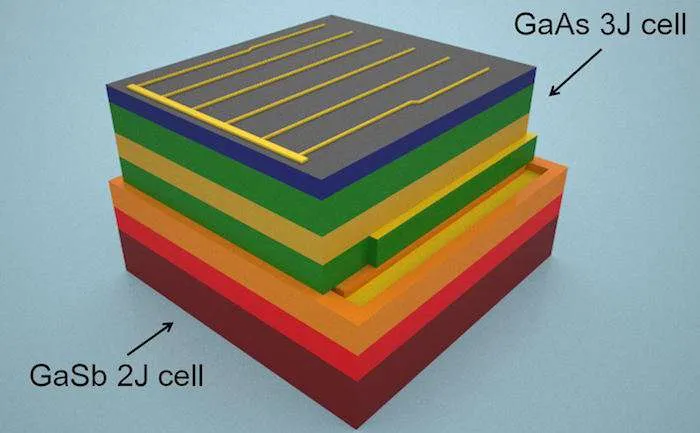
A new prototype for a solar cell that stacks multiple cell into a single device is able to capture nearly all of the energy in the solar spectrum. Cell operates at the efficiency of 44.5 percent, near, but still bellow the 46 percent, which is the world record for conversion of solar to electric energy. However, the new design is expected to be more cost efficient and a possible candidate for mass production.
Scientists used the different approach from the regular solar panels. The new cell uses concentrator photovoltaic (CPV) panels that concentrates sunlight through lenses onto very small-scale solar cells. Because of their size; which is under a millimeter square the solar cells are expected to use expensive materials cost effectively. The stacked cell acts like a series of sieves for sunlight, with each layer absorbing the energy of a different set of wavelengths. This way close to half of the available energy is converted into electricity, while the commonly marketed solar cell typically converts only a quarter of the available energy into electricity.
"Using transfer printing, a commercially available GaAs-based triple junction cell is stacked mechanically with the GaSb-based materials to create a four-terminal, five junction cell with a spectral response range covering the region containing >99% of the available direct-beam power from the Sun reaching the surface of the Earth. ", explains the article, published in the Advanced Energy Materials Journal.